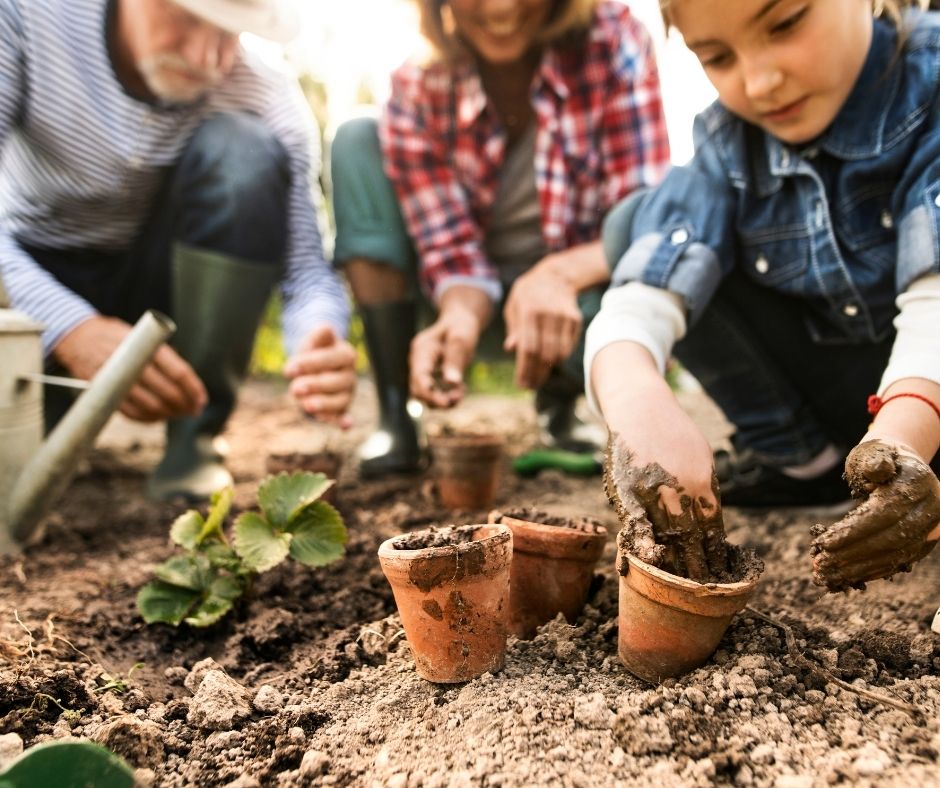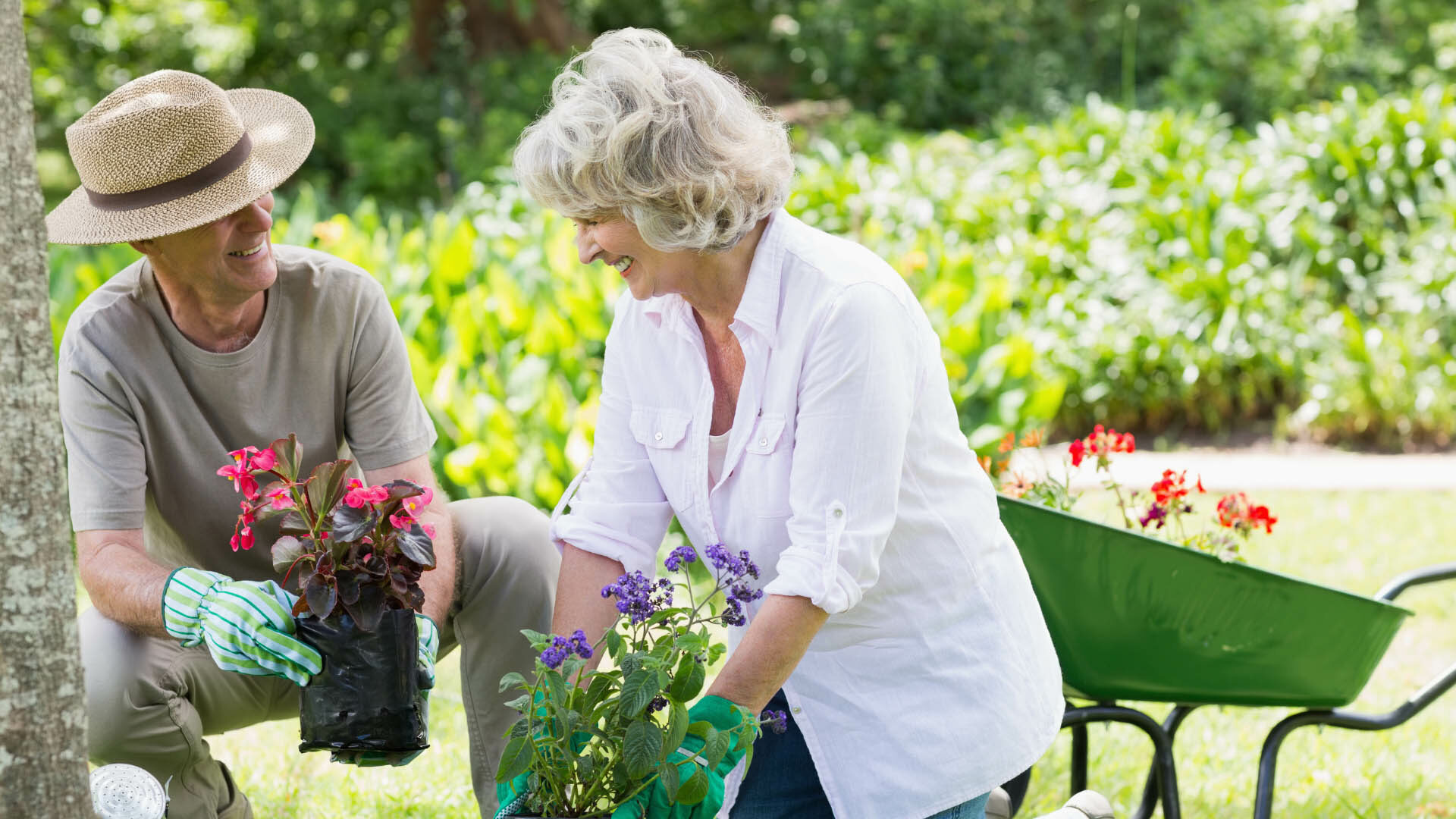Gardening is one of those rare and beautiful things in life that’s a win, win, win no matter how you look at it. Studies show that gardening can improve your mood, reduce your stress, decrease your risk of dementia and the time spent outdoors means more sunshine and all the benefits of higher vitamin D levels. Not only is gardening great for your physical and mental well-being, but it’ll also add beauty to your home and neighborhood. However, if you’re a first-time gardener, the task may be a bit overwhelming – what do you plant, when do you plant, and how do you care for your plants once they’re in the ground? Below is our guide for the rookie gardener in Atlanta. Happy Gardening!
1. Access your land and make a plan: First, choose an area of your yard that makes sense aesthetically and gets plenty of sun. This may be along the perimeter of your home, driveway, or sidewalk. You can also create a garden island in the middle of your yard. At this stage, pay attention to the sun patterns, which areas get the most and least sunlight, and test your soil to see what level of acidity you’re working with.
2. Draw out your garden layout and choose appropriate plants: The key to a successful garden is planning. Once you designate the area you’re going to start your garden in, consider the plants you want to include and how they will work together. Arborvitae, for example, is a great privacy shrub that grows tall quickly. In knowing this, you wouldn’t want to place a shorter plant like a petunia behind your arborvitae since it’d soon get overshadowed. The same goes for vegetable gardens. If you want to start a vegetable garden, consider building or purchasing cedar-raised beds. Cedar is the preferred material as it naturally resists rot and insects. As far as placement within your yard, we recommend a space that gets 8+ hours of sun a day – the more, the better. Measure garden bed width and length based on the type of vegetables you’re hoping to grow – one square foot per plant is a good rule of thumb, but this varies, so ensure you’re doing your research. In short, consider how your plants will grow next to each other and plan accordingly.
3. Decide when you’re going to plant: Seasonality is a big part of gardening. It affects the products available, how much sun they’ll get, and when they’ll bloom. When shopping for plants, here are some keywords to know:
- Perennials – Perennial plants regrow every spring and generally have a shorter blooming period.
- Annuals – Annual plants live for only one growing season, then die off but have a longer blooming period.
- Shade – Plants that do well in full shade need a lot of relief from the sun, and it’s likely best to keep them out of the afternoon sun (keep in mind that the morning sun is less harsh.)
- Partial Shade -Partial shade is an area that receives two hours of direct sun each day or is shaded for at least half the day.
- Partial Sun – Partial sun means that the plant needs three to six hours of direct sun per day. Some nurseries will use partial sun and partial shade interchangeably. Remember that partial sun implies that the plant needs more sun and is more heat tolerant.
- Full Sun – Plants that read “full sun” on the label need at least 6 hours a day, but the more sun, the better.

4. Prepare the land – Grading the soil, meaning leveling the ground and preparing it for planting, is not a job for the faint of heart. This process requires digging a few inches down and clearing out roots, sod, and rocks to create a garden bed. Once this is complete, whether you’re doing this work yourself or hiring a professional, you may want to spread weed preventer to help reduce the number of weeds that will pop through over time. Next, place your plants in the pots where you imagine them going according to your original plan and the required space they each need. Then, you can start planting them one by one. We recommend breaking up the roots a bit to help with growth. Next, you can lay your fabric to help further prevent weeds. The thicker you go with your choice of material, the harder it’ll be for plants to penetrate the barrier. Last but certainly not least, it’s time to lay your stone or mulch. This step will pull your labor of love together and offer a finished and aesthetically pleasing result.
5. Consult a professional gardener – Gardening, especially for newbies, can be overwhelming. So, when in doubt, we highly recommend consulting a professional. Not only will you support a local business or professional, but you can also save money in the long run. A local professional who understands the area will advise you on the best plants for your land layout, soil, climate, and aesthetic.
Lennar homes and communities in Atlanta offer big beautiful yards, perfect for filling with flowers, vegetables, and stunning local fauna for those who love to cultivate and maintain their home. Whether you opt for a home in the Holbrook Farm community or Villas at River Park, the opportunities are endless. However, we also have low-maintenance communities! Communities like Stephens Point and Aspen Grove come with landscaping included.
For more information, or to learn more about available Lennar homes and communities in Atlanta, contact our Internet Sales Consultants: Kim, Marianne, Suzanne, Ezio, Michelle, Chrissy, and Kelly at (404) 931-7462 | https://www.lennar.com/new-homes/georgia/atlanta/




